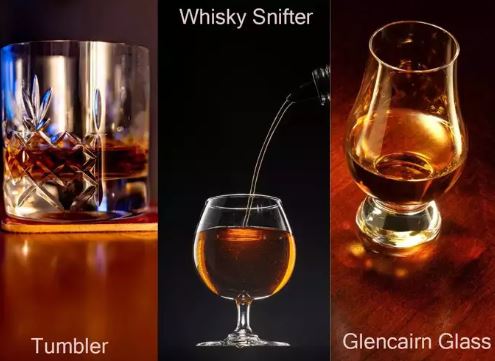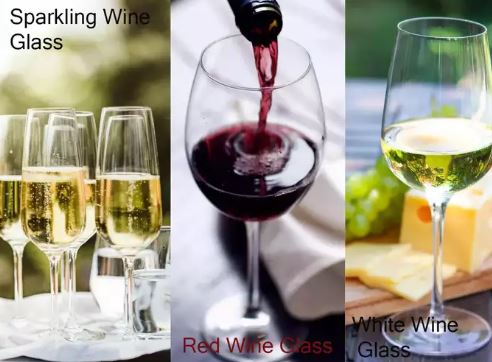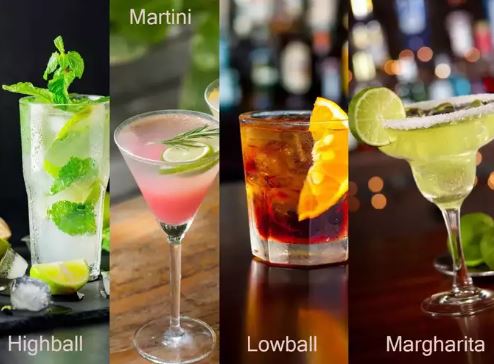Lifestyle
Different glassware for all kinds of alcoholic drinks

Wines, scotch or vodkas, whatever is your poison, the fact is that different drinks taste better in different types of glasses.
So, making the right choice of glassware can make all the difference in enjoying the drinking experience to the fullest.
This being the holiday season, channel your inner bartender and impress your guests by serving your best spirits in the right glassware.
1. Glassware for whisky

Be it mixed, neat or on the rocks, there is a range of glasses designed to enhance the flavours and aromas of a good whisky. The old-fashioned Tumbler glass is one of the most popular and timeless choices.
The heavy base ensures that the glass is not damaged during mixing while the thinner glass sides allow you to taste the flavours of your favourite dram.
The Whisky Snifter is where the epitome of Whisky class can be found. It features a wide bottom that fits easily in the hand, perfect for warming, swirling and releasing flavours. The narrower top directs the smell straight to the nose.
There is also the Glencairn Whisky Glass with a short, solid base. It is perfect for learning how to swirl whisky to open up the aromas for a full appreciation of the whisky. The bowl shape channels aromas towards a narrowed rim.
2. Glassware for wines

White wines – Chardonnay/ Viognier
In general, glasses specifically designed for white wine will have a more upright and “U”-shaped bowl than those meant for red wines. It’s meant for young, fresh wines, as the slightly narrow rim of the white wine glass concentrates the nose of highly aromatic white wines. The smaller bowl size also keeps the white wine colder than the larger bowls used for reds.
Sparkling
This wine glass shape of the Champagne glass or the Champagne Flute Glass as it is commonly known helps keep the fizz longer and allows the bubbles to play on your tongue. It also keeps the fruit and potential yeasty aromas focused with its narrow design.
Red wines – Burgundy
The Burgundy glass is not as tall but typically has a wider bowl. The glass bowl is bigger so that it can accommodate some of the aromas of wines that are a bit more delicate. It directs the wine to the tip of the tongue, thus highlighting the fruit and naturally balancing the high acidity. Due to the shape of the glass, you will experience tasting the wine first on the tip of the tongue, then throughout the mouth.
Bordeaux
A Bordeaux wine glass set is a typical standard wine glass. It is a tall glass with a full sized bowl that allows the aroma to collect at the best and also allow a generous swirl as thinner glass splashes the wine to the back of the mouth.
3. Different types of beer glasses

Mugs
Beer mugs come in a variety of shapes and sizes. What holds true for all beer mugs, however, is the handle projecting from one side. It’s a design feature that, like a stem, helps prevent heat transference from your hand to the beer.
Pilsner glass
Tall, slim, and slightly wider at the mouth, a pilsner glass makes visible the sparkle, clarity, and bubbles of pilsners and other lighter beers. Typically, pilsner glasses hold less beer than a pint glass–usually somewhere in the vicinity of 12 to 14 ounces.
Craft beer glass
Craft beer or small batches of beer should be enjoyed from the right glass; after all you may not know when you will get to experience a similar brew again. Craft beer glasses are meant to enjoy a specific beer and designed to lift, enhance and make the taste as good as it possibly can be.
4. Cocktail glassware

Lowball
A lowball glass is also called an Old-Fashioned glass. A lowball glass is a short but full glass with a very thick base. The thick base creates a wide surface area and this helps with mixed drinks remaining that way.
Highball
A highball glass is a large and tall glass. A hi ball glass is used to serve drinks that are poured over a tower of ice. These drinks have a more substantial non-alcoholic portion than otherwise. A hi-ball glass set is used to serve exceedingly popular drinks like Bloody Mary or a Mojito.
Martini glass
Martinis used to be served in cocktail glasses or highball glasses. However, as time went on, martinis evolved to include a significant portion of vodka. To suitably cater to this new martini, the martini glass was invented. Martini glasses differ from the traditional cocktail glass by generally having a larger bowl and being fully conical at the bottom.
Margarita glass
A margarita glass is similar to a cocktail glass, but its cone narrows into a second much thinner segment at the narrow end and has a very wide mouth.
Gin Copa glass
Gin has gained popularity in recent times with endless flavours and combinations. Connoisseurs prefer a traditional Copa which has a large bowl and sits on a stem. The Copa is designed to trap the aromas and flavours of the gin and also allows for plenty of ice and lime into the glass to keep the drink cool and add to the flavour.
Just as individual choices in spirits are diverse, so also is the range of glassware designed to bring out the flavours, and aromas and impact your drinking experience. It is the right pairing of the two which is essential to truly enjoy your tipple.







